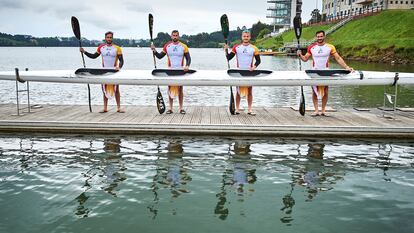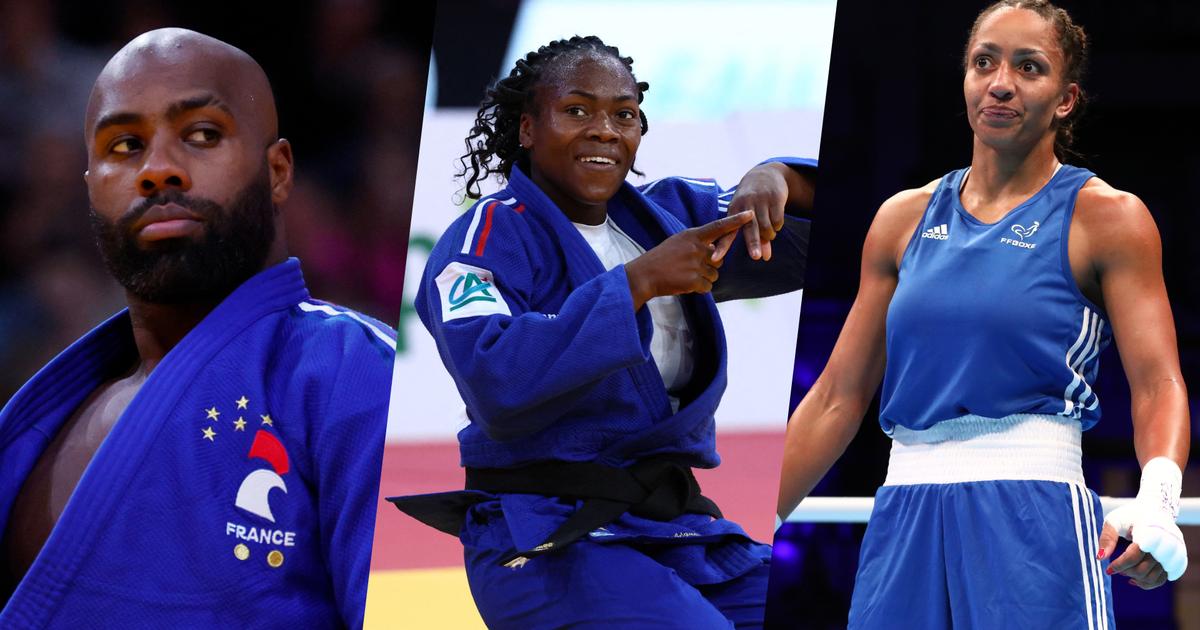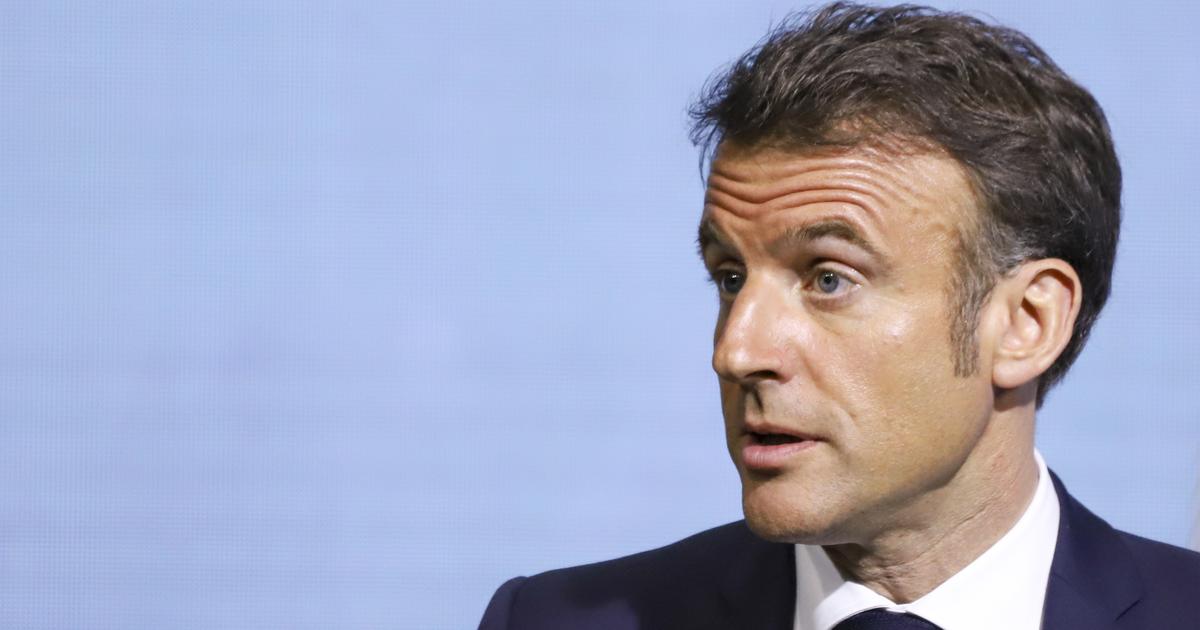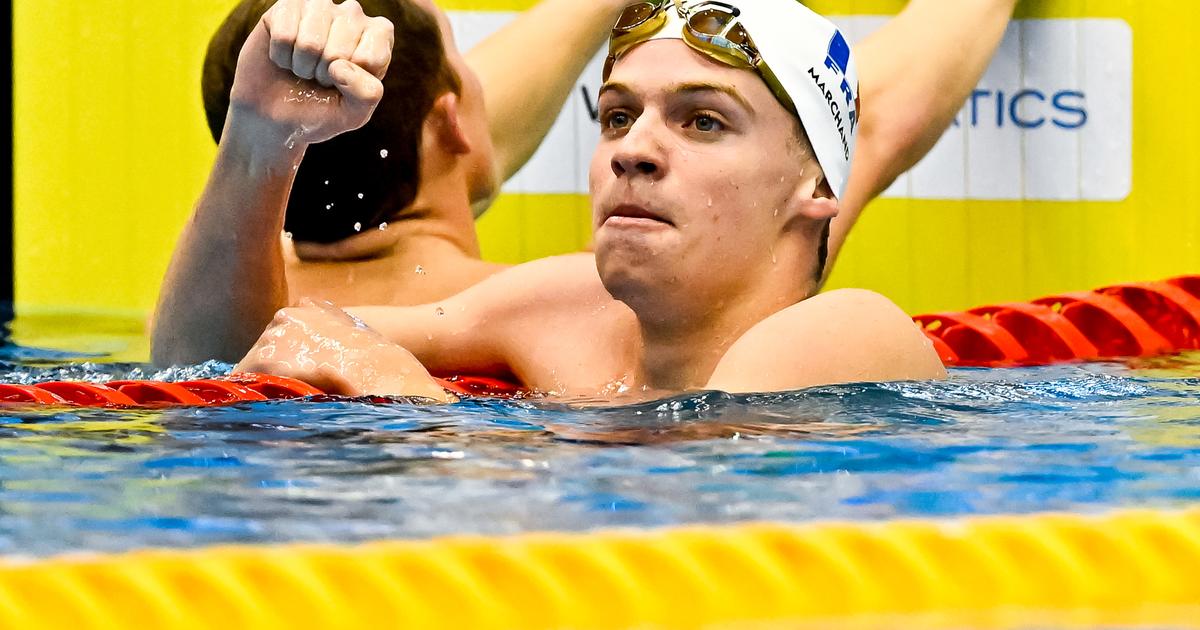The last time Spain won an Olympic medal in K4 was 1976; The members of that feat carried a canoe made to measure by an Asturian craftsman with a solid wooden mold and the outer face of cedar. It was an unpublished model that in the following years other manufacturers copied and used other national teams. The one in 2021, with which Saúl Craviotto, Marcus Cooper, Carlos Arévalo and Rodrigo Germade seek gold in Tokyo (the qualifiers are on August 6), has been manufactured in Portugal, at the Nelo factory. Three copies have been made; two left for Tokyo in mid-May. As it is a custom-made boat, you must have a spare during the Games, because if a part breaks, as it is personalized, it cannot be replaced.With the third specimen, the canoeists have been training for the last four months at the Trasona headquarters, Asturias.
More information
Video report |
The fight against time of Teresa Portela, the first Spanish woman to play six Olympic Games
The "blessed madness" of the unknown novice canoeing couple
Video report |
David Llorente, the 'clumsy feral' of whitewater who made himself
There, one day in early June at nine in the morning, there is no one. It is cool, although summer is showing. It is a quiet environment in the middle of nature. A single voice is heard, above all else. That of Miguel García, the technician of the K4-500. “Come on gentlemen, let's hang on there. Believe it or not, time is not falling, you are nailing those of these days. Together, uh, together! Arevalo, don't go down ”, he shouts from the motorboat, as he follows his pupils in training. They are working on the starts and the change of pace in the last section of the race. These are days of series busting arms and lungs. Days of testing lactate, the organic compound that the body generates when burning calories for energy: the more the body tolerates it, the greater distances in less time.
Account Arevalo, a 27-year-old Galician and the person in charge of giving the signal when it is necessary to change the rhythm and put one more gear, who had never trained so much in his life.
“Anyone around me can tell you how shattered and busted I have come home every day since January.
It's been tough, it's being tough… but it's an ambitious goal ”.
García, the technician, corroborates the hardness of the final stretch of preparation: "Saúl ended up vomiting the other day, he hadn't done it in training for a long time ... in competition it usually happens more."
Rodrigo Germade (left) and Marcus Cooper lower the canoe to go out into the water in the Trasona reservoir (Asturias), this June.
PABLO LASAOSA
The K4-500, a strong candidate for a medal in the Sea Forest Canal, the headquarters of sprint canoeing in Tokyo, has gone from being involved in an endless controversy in the selective inmates due to the allegations of tampering by Carlos Garrote, to rearming itself and winning the gold at the Szeged World Cup in May.
That day they imposed themselves on almighty Germany.
The German technicians went straight to the hangar in Spain to congratulate Miguel García and the canoeists.
That race, the first since August 2019 due to the pandemic, was also a test for the new boat.
New distribution of weights
Garcia explains the modifications they have made to the new model. “We wanted to look for something more radical than simply moving the seats backwards or forwards. And we did it. We moved the entire distribution of the weights inside the boat, both the bathtubs and the positions in which the boys are placed. We also modify the volume of the hull: it is the part under the canoe, what goes under the water, the living work that they call it in nautical ”.
It happens that, unlike almost all countries, which have a more balanced distribution of weights, the brand of the Spanish boat [Saúl Craviotto, the one who goes to the bow] is the one that weighs the most. "Saúl weighs 97 [kilograms], almost 10 kilos more than the others: Arévalo weighs 88, Cooper 86 the same as Germade and that means that the total weight, 357, is much displaced forward, that is why we are looking for a better distribution," explains García. . The team member at the bow is the one who sets the pace of competition and stroke. Cooper (the second) transmits everything that the brand does to others and at the same time transmits those who push back. It is the nexus between one and the other. Arévalo (the third) brings strength. Germade (the one sitting in the stern) is the one who provides balance and stabilization: the one in charge of not complicating the slide.
What does this distribution of weights translate into and what are the effects of the change? García answers: “Before starting the boat [the boat goes from zero to reaching a peak of 17 miles per hour], when it is still, it is sunk; as it picks up speed it comes out of the water a bit. The distribution of the weights as we had it made it more difficult for us to start it faster because all the weight is forward. When the bow is raised, the rear is stabilized. We want him to plan a little ”.
That, at the start.
In the final part?
The technician answers again.
“We believe that it will be important also because it is the section in which the boat, due to fatigue, begins to lose speed.
We want that speed to fall less and to bury less forward ”.
Mods are working.
There were weeks of tests and adjustments with the manufacturer to find out if the boat was going to withstand that displacement in the race.
Did.
And since mid-May, since they returned with the World Cup gold, they have worked tirelessly on what was left to refine.
Marcus Cooper tells it: “We have worked on the competition rhythm, the maximum rhythm, that of holding on to a high stroke rate, and strength, that of engaging when going at maximum speed.
It was the stretch that we needed to train before the Games ”.
The K4-500 landed in Tokyo on July 16 so that Craviotto, the standard bearer for the opening ceremony, could arrive early.
And he warns: “This K4 looks very good, but you always have to keep your feet on the ground, the rivals are also trying to be faster.
The Germans are now wounded and have been giving up their lives for two months trying to close the gap.
I think we can do something great, but sometimes it doesn't just depend on us… ”.
From left to right: Rodrigo Germade, Carlos Arévalo, Marcus Cooper and Saúl Craviotto, the members of the K4-500 team, in Trasona (Asturias) in June.
PABLO LASAOSA
Subscribe here
to our special newsletter about the Tokyo Games






/cloudfront-eu-central-1.images.arcpublishing.com/prisa/LWK5VCYPKCJNXGUFQDAIJVRK5A.jpg)



/cloudfront-eu-central-1.images.arcpublishing.com/prisa/S7UVDTX7DREC7DXVCZN6MEKGBY.jpg)




